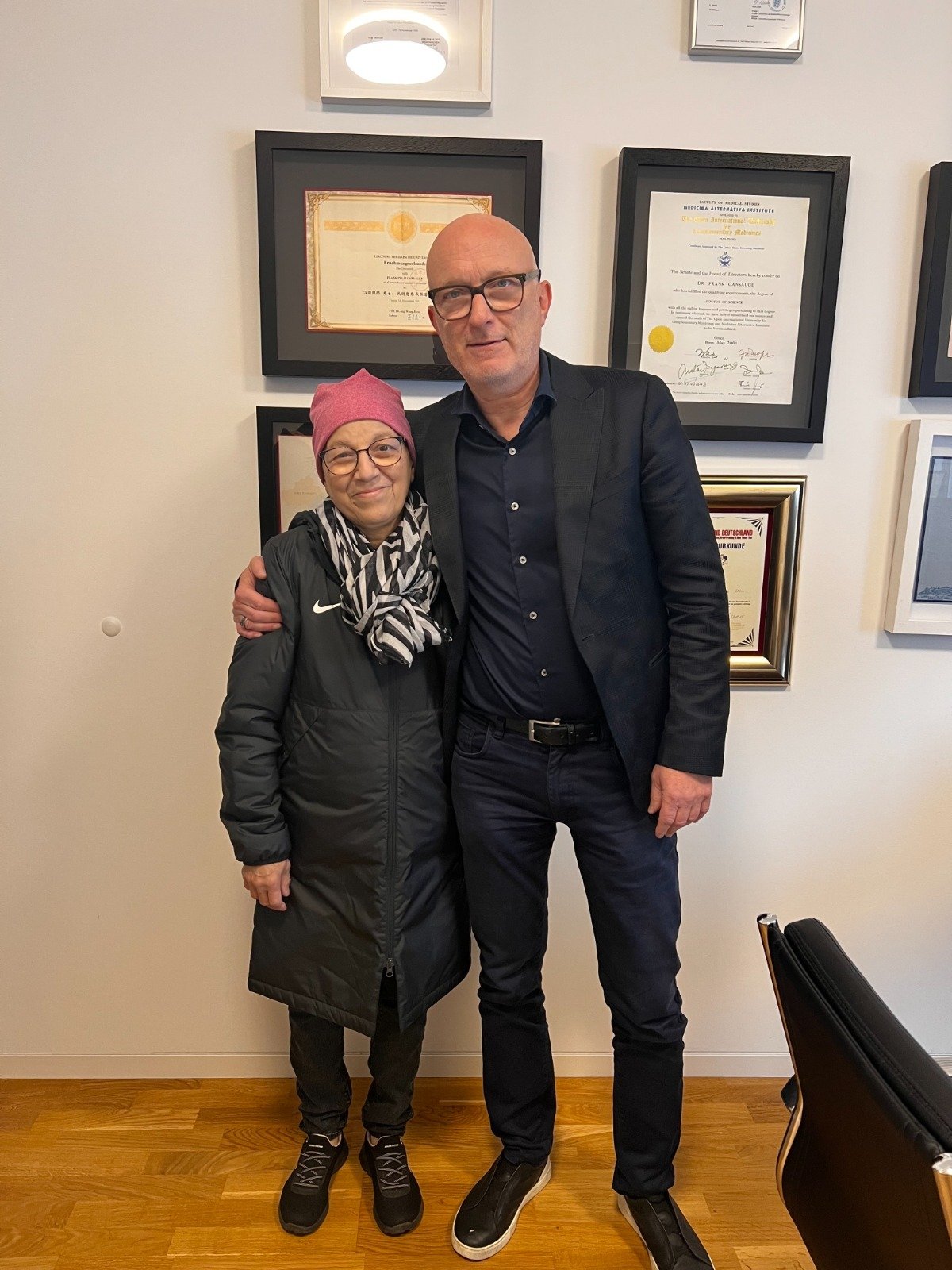
German clinics report an improvement of 5-year survival rates by up to 38-52% with advanced intraperitoneal chemotherapy methods and immune-based treatments, significantly outperforming conventional approaches used globally.
Germany stands at the forefront of advanced oncology, revolutionizing pancreatic tumor detection with cutting-edge imaging technologies. pancreatic cancer patients benefit from precision imaging, AI-enhanced diagnostics, multimodal approaches, and real-time monitoring, all designed to improve early detection rates and treatment outcomes.
Pancreatic tumors, predominantly pancreatic ductal adenocarcinoma (PDAC), are among the deadliest cancers due to their late diagnosis and aggressive nature. Risk factors include chronic pancreatitis, diabetes, obesity, and genetic predispositions (e.g., BRCA2 mutations). German oncology centers lead in delivering personalized cancer care, integrating advanced imaging, minimally invasive biopsies, and clinical trials to enhance disease management and patient outcomes.
Early identification of pancreatic tumor symptoms is crucial for timely imaging and treatment. Common symptoms include:
These symptoms often present late, underscoring the need for diagnostic accuracy. German gastroenterologists and radiologists leverage advanced imaging to confirm pancreatic tumors and guide therapeutic strategies.
Achieving Diagnostic Accuracy with Advanced Imaging
Diagnostic accuracy is the foundation of effective pancreatic tumor detection. German oncology centers employ state-of-the-art imaging technologies:
German imaging specialists ensure rapid, precise diagnostics, enabling personalized treatment plans for pancreatic cancer patients.
Latest Advances Transforming Imaging for Pancreatic Tumor Detection
Germany’s technological breakthroughs in 2025 are redefining pancreatic tumor detection, enhancing early detection rates through clinical trials and precision diagnostics.
Multimodal Imaging Techniques: Comprehensive Tumor Visualization
Multimodal imaging combines multiple technologies for superior pancreatic tumor detection:
German radiologists lead in integrating these multimodal approaches, enhancing treatment planning.
AI-Enhanced Diagnostics: Revolutionizing Tumor Identification
AI-driven diagnostics transform pancreatic tumor detection:
German researchers pioneer AI-enhanced diagnostics, advancing precision oncology.
Innovative Imaging Modalities: Pushing Diagnostic Boundaries
New imaging technologies expand pancreatic tumor detection capabilities:
Real-Time Monitoring and Interventional Imaging
Real-time monitoring enhances pancreatic tumor detection and treatment:
German interventional radiologists leverage these tools to optimize disease management.
Clinical Trials Driving Imaging Innovations
Germany’s clinical trials fuel pancreatic tumor detection advancements:
Why Germany Excels in Imaging for Pancreatic Tumor Detection
Germany offers unparalleled advantages for pancreatic cancer patients:
Risk Factors and Prevention Strategies for Pancreatic Tumors
Preventing pancreatic tumor recurrence supports diagnostic efficacy. Key risk factors include:
German specialists recommend EUS screening, MRI, and lifestyle modifications to reduce disease risk.
Comprehensive Multidisciplinary Diagnostic Care
Germany’s multidisciplinary diagnostic care integrates:
This approach optimizes patient outcomes.
Post-Diagnostic Support and Enhancing Quality of Life
Post-diagnostic care includes:
Challenges and Future Horizons
Challenges include imaging small tumors and interpreting complex cases. German researchers address these through:
Future technological breakthroughs promise enhanced early detection rates.
Conclusion
Germany’s latest advances in imaging for pancreatic tumor detection offer hope through multimodal imaging, AI-enhanced diagnostics, innovative modalities, and real-time monitoring. With multidisciplinary diagnostic care and holistic support, German oncology centers achieve superior early detection rates and treatment outcomes, positioning Germany as a global leader in pancreatic cancer care.
Frequently Asked Questions
What are the latest advances in imaging for pancreatic tumor detection in Germany in 2025?
Germany leads with EUS with elastography, PET-MRI, confocal laser endomicroscopy, photoacoustic imaging, and AI-enhanced diagnostics, significantly improving early detection rates for pancreatic tumors.
What symptoms indicate the need for pancreatic tumor imaging?
Symptoms include abdominal pain, jaundice, unexplained weight loss, fatigue, nausea, and new-onset diabetes, often prompting EUS or MRI for confirmation.
How is eligibility for advanced imaging techniques determined in Germany?
Through multiparametric MRI, contrast-enhanced CT, EUS, liquid biopsies, and genomic profiling, ensuring diagnostic accuracy for personalized diagnostic plans.
What clinical trials are driving imaging advancements for pancreatic tumors in Germany?
Trials like PANC-IMAGE, EUS-CLE Study, and Nano-Imaging Trials explore AI-enhanced PET-MRI, confocal laser endomicroscopy, and nanoparticle-enhanced CT for improved tumor detection.
What follow-up care is provided after pancreatic tumor imaging in Germany?
Comprehensive care includes monitoring with ctDNA and CA 19-9 tests, rehabilitation for fatigue or weight loss, and emotional wellness support through counseling and support groups.
How does Germany compare to the UK or US for pancreatic tumor imaging?
Germany excels with technological breakthroughs, rapid access to clinical trials, advanced imaging tools, and holistic diagnostic strategies, offering superior early detection rates compared to many peers.
Can advanced imaging prevent pancreatic tumor progression?
Early imaging with EUS or PET-MRI enables timely treatment, reducing disease progression risk by facilitating early intervention, as shown in clinical trials.
Does Germany support international pancreatic tumor patients?
Yes, hospitals in Germany provide language assistance, travel coordination, and emotional wellness programs to ensure seamless care for global pancreatic cancer patients.
What are the most promising imaging advancements for pancreatic tumors in Germany?
AI-driven tumor segmentation, photoacoustic imaging, nanoparticle-enhanced CT, and integrated PET-MRI are pushing the boundaries of precision diagnostics.
How do Germany’s advanced imaging techniques differ from traditional pancreatic tumor detection methods?
Unlike traditional ultrasound or basic CT, advanced imaging uses multimodal approaches, AI analysis, and real-time monitoring for superior diagnostic accuracy, minimizing delays in treatment.
For more information or a free consultation, visit our contact us page.
Kindly complete the form below, and our dedicated team will reach out to you promptly. We look forward to connecting with you soon!
Trierer Straße, 56072 Koblenz, Germany
.webp)
.webp)
 (1).webp)
 (1).webp)

.webp)
.webp)
 (1).webp)
 (1).webp)
